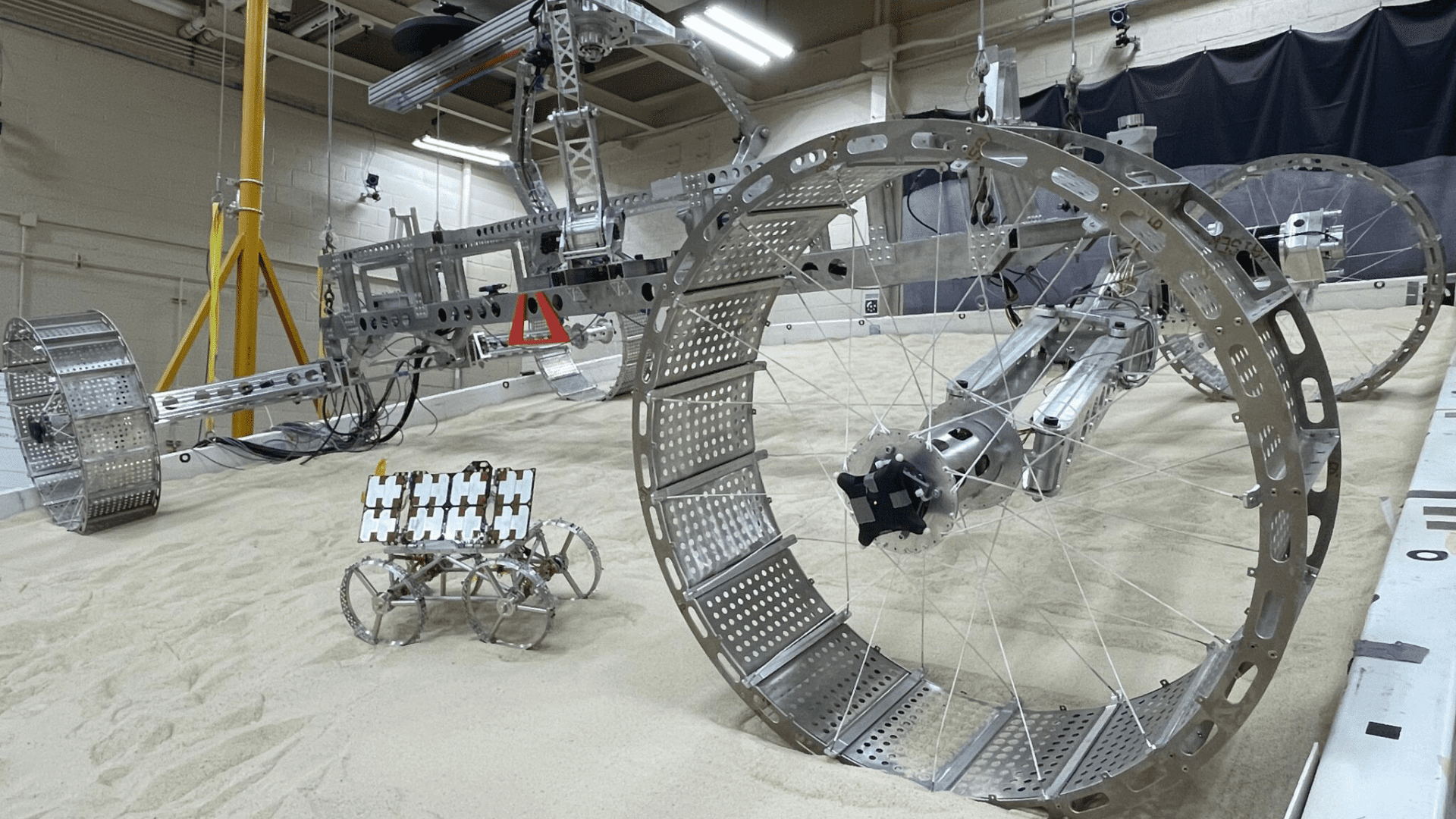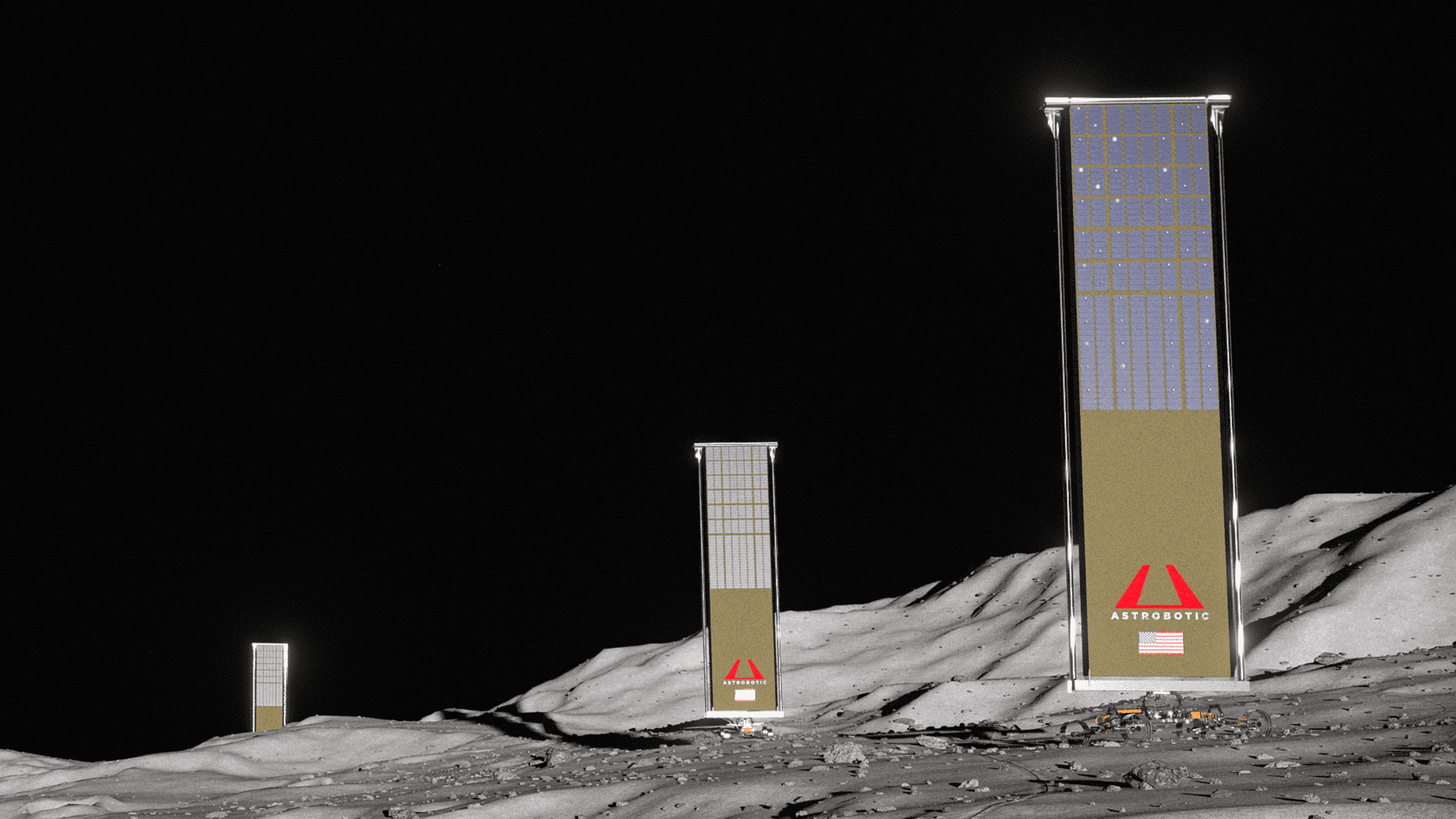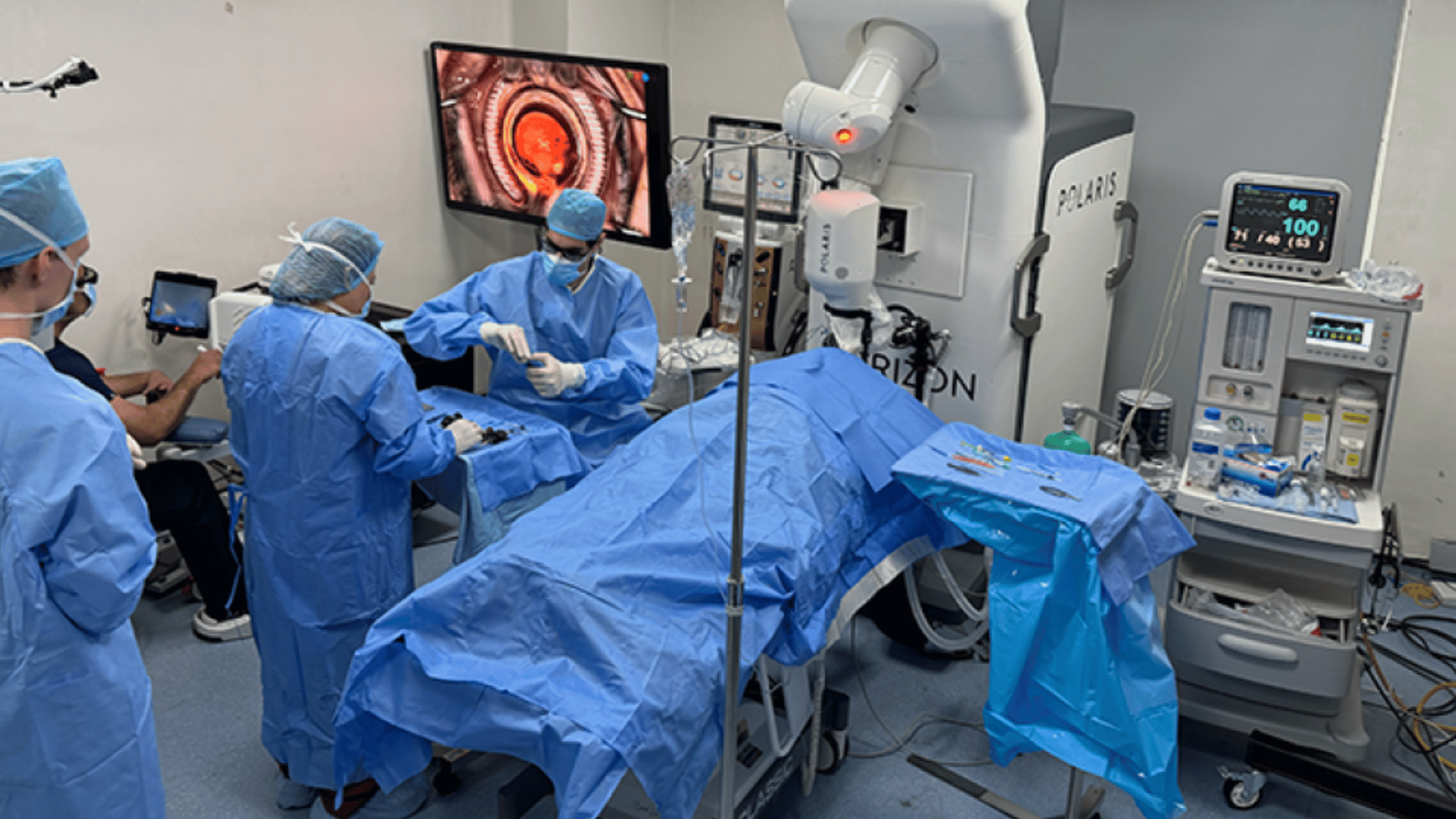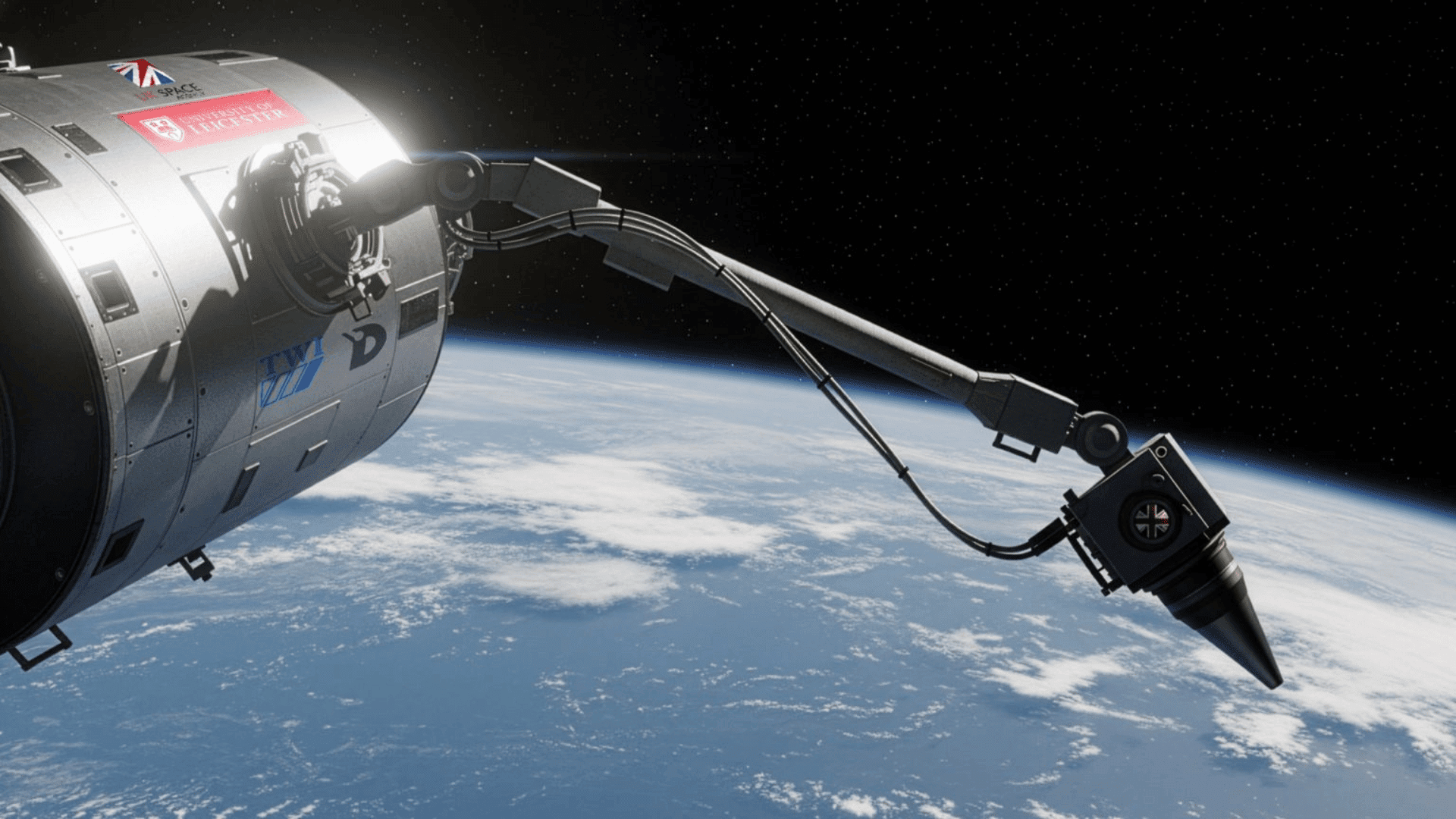Astrobotic Technology in Pittsburgh, Pennsylvania, is one step closer to establishing a lunar power grid. Astrobotic’s new rover, the VSAT Optimized for Lunar Traverse (VOLT), finished a summer-long test at NASA’s Glenn Research Center in Cleveland, Ohio. The VOLT is a lunar rover with a vertical solar array designed to explore the Moon while harnessing solar energy.
VOLT

VOLT’s vertical array captures solar energy at the lunar south pole to charge various lunar assets. The captured energy could charge habitats, rovers, and science instruments.
An engineering model of VOLT’s mobile rover finished testing at the Simulated Lunar Operations Laboratory (SLOPE) at Glenn Research Center. Testing included the vehicle’s stability, gimbal functionality, and sun-tracking capabilities. Scientists conducted the tests on an inclined bed of lunar regolith simulant. VOLT is designed to operate on a 15-degree slope but surpassed expectations after operating on a 20-degree incline without slippage. According to Astrobotic, it remained completely stable on an increased incline.
Furthermore, another test confirmed its ability to support the 60-foot solar array. VOLT managed to maintain level stability at a 3-degree tolerance. NASA Glenn’s motion cameras validated VOLT’s ability to withstand the inclined terrain on the lunar south pole.
“To supply continuous power at the poles of the Moon, we need to take advantage of existing peaks of persistent light: locations with near constant sunlight throughout the year,” said Robert Rolley, Astrobotic’s Principal Investigator for VOLT. “Since most of these locations are at crater rims with high slope angles, we designed VOLT to deploy on extreme slopes.”
Rolley added, “These tests proved that our system can operate successfully, with plenty of margin for more extreme locations.”
LunaGrid

VOLT’s mobile base is a lunar rover, the size of a minivan. The structure, including the electronics and gimbal, also took 12 weeks to build. In fact, the gimbal is key to capturing solar energy on the Moon because it orients the solar array. It levels the array on uneven terrain and maintains stability as it autonomously tracks the Sun 360 degrees.
More so, VOLT is part of Astrobotic’s LunaGrid system to deliver power to the Moon. LunaGrid is a chain of VOLTs that generate power. CubeRovers act as mobile power plugs for the VOLTs to distribute power. According to Astrobotic, LunaGrib will supply power for systems to operate during lunar day and survive lunar night for months.
“It’s imperative that we solve the power-generation challenge on the Moon for sustainable long-term operations,” said John Landreneau, Senior Project Manager at Astrobotic. “VOLT’s ability to precisely drive and operate in the most desirable areas for solar capture and distribution sets this technology apart.”
Astrobotic Technology plans to unveil the entire VOLT engineering model in October at the annual Keystone Space Conference in Pittsburgh, PA.







